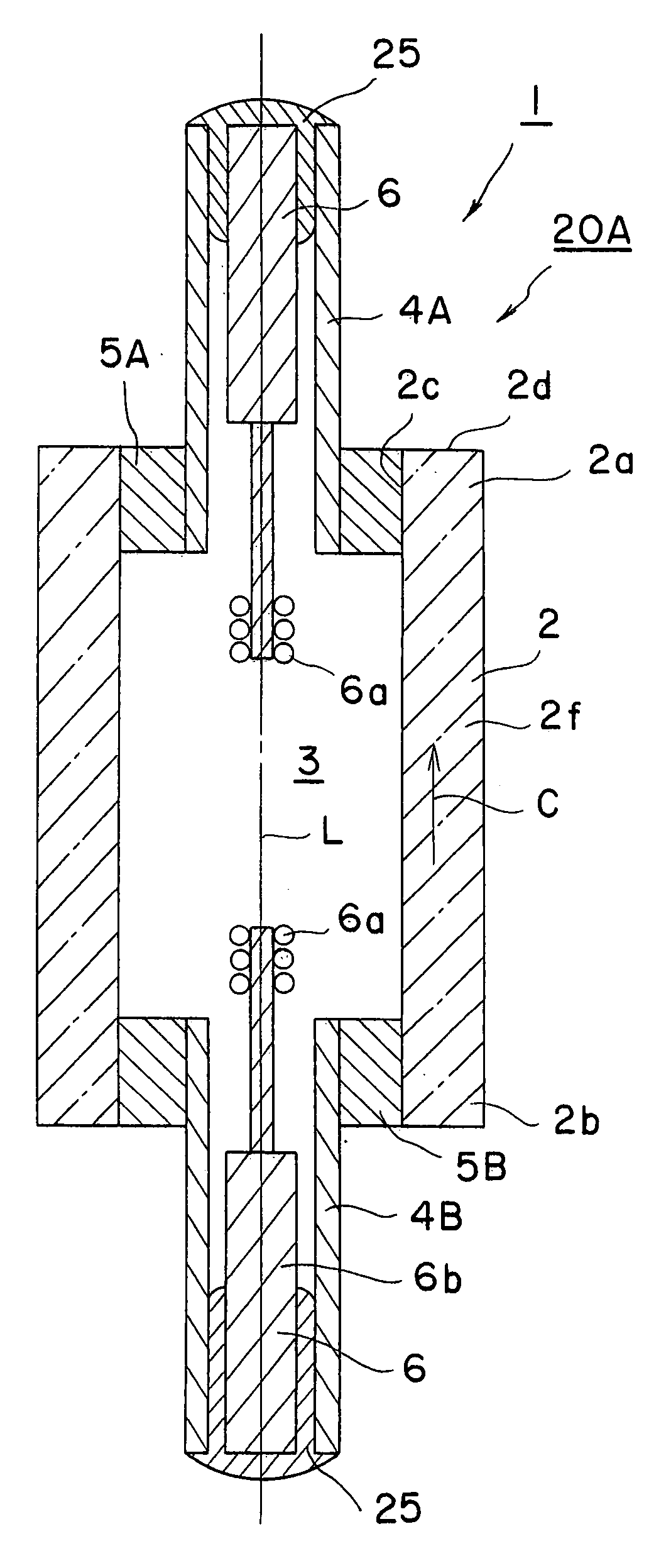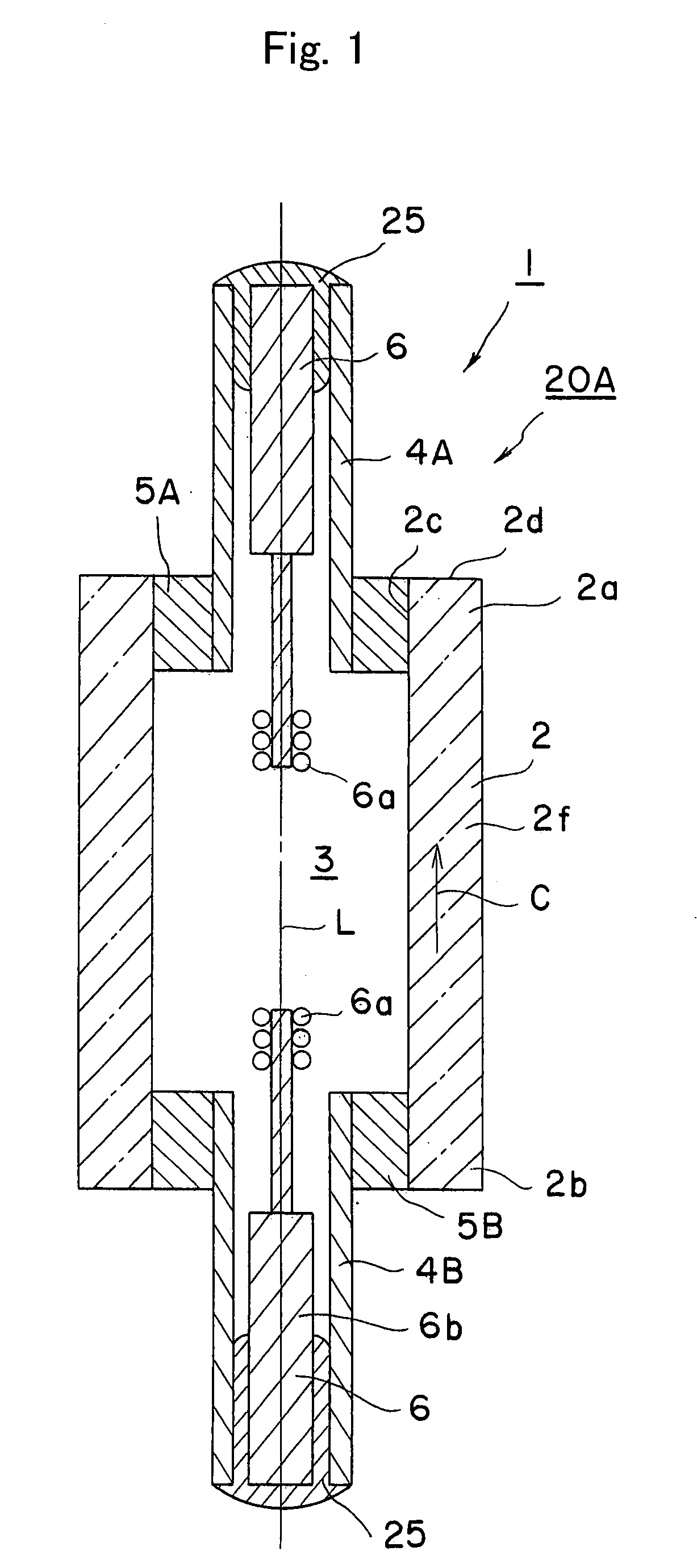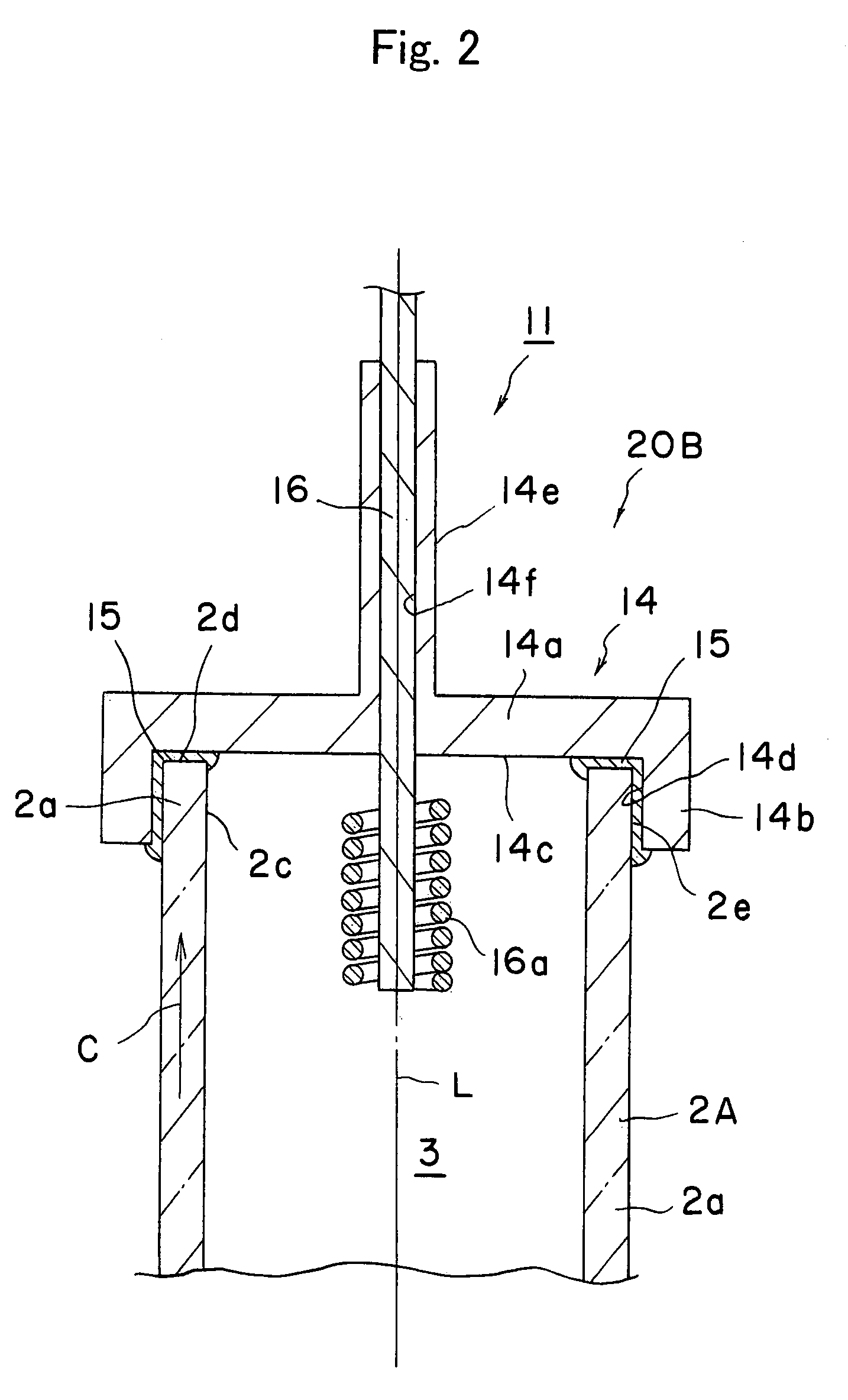Joined bodies, luminous containers and assemblies for high pressure discharge lamps
a high-pressure discharge and assembly technology, applied in the manufacture of electric discharge tubes/lamps, cold cathode manufacturing, electrode systems, etc., can solve the problems of difference between the thermal expansion coefficient of a material, and the adhesion is susceptible to corrosion, so as to achieve the effect of significantly reducing the incidence of cracks
- Summary
- Abstract
- Description
- Claims
- Application Information
AI Technical Summary
Benefits of technology
Problems solved by technology
Method used
Image
Examples
experiment a
[0055]The assembly for a high pressure discharge lamp and luminous container shown in FIG. 1 were produced. Specifically, the discharge vessel 2 and sealing members 4A and 4B were formed of sapphire. The electrode member 6 was made of molybdenum.
[0056]A mixture of powdery raw materials of dysprosium oxide, alumina and silicon oxide was weighed. The ratios are shown in Table 1 (represented by an unit of molar percent).
[0057]
TABLE 1ExperimentNumberDy2O3Sc2O3Al2O3SiO21480520240852036503234650181757701310
[0058]Each mixture was shaped to obtain a ring-shaped body, which was then dewaxed at 700° C. in atmosphere. The thus obtained ring-shaped bodies were set at positions for the joining materials 5A and 5B shown in FIG. 1, and heat treated in non-oxidizing and dry atmosphere and then cooled. The temperature for the heat treatment was shown in table 2. The thus obtained luminous container of each example was stood still for 96 hours. The presence of cracks in sapphire was observed. The inc...
experiment b
[0062]The assembly for a high pressure discharge lamp and luminous container shown in FIG. 1 were produced. Specifically, the discharge vessel 2 and sealing members 4A and 4B were formed of sapphire. The electrode member 6 was made of molybdenum. The joining material was made from a mixture of powdery raw materials of dysprosium oxide, alumina and silicon oxide. The ratio was: dysprosium oxide; 65 mole percent, alumina; 32 mole percent, and silicon oxide; 3 mole percent.
[0063]The mixture was shaped to obtain a ring-shaped body, which was then dewaxed at 700° C. in atmosphere. The thus obtained ring-shaped bodies were set at positions for the joining materials 5A and 5B shown in FIG. 1, and heat treated in non-oxidizing and dry atmosphere at 1650° C. and then cooled. The angle of c-axis of sapphire and central axis “L” of the vessel was changed as shown in table 3. The thus obtained luminous container of each example was stood still for 96 hours. The presence of cracks in sapphire wa...
PUM
| Property | Measurement | Unit |
|---|---|---|
| angle | aaaaa | aaaaa |
| temperature | aaaaa | aaaaa |
| temperature | aaaaa | aaaaa |
Abstract
Description
Claims
Application Information
 Login to View More
Login to View More - R&D
- Intellectual Property
- Life Sciences
- Materials
- Tech Scout
- Unparalleled Data Quality
- Higher Quality Content
- 60% Fewer Hallucinations
Browse by: Latest US Patents, China's latest patents, Technical Efficacy Thesaurus, Application Domain, Technology Topic, Popular Technical Reports.
© 2025 PatSnap. All rights reserved.Legal|Privacy policy|Modern Slavery Act Transparency Statement|Sitemap|About US| Contact US: help@patsnap.com



